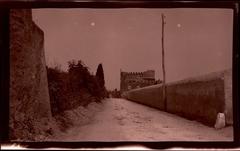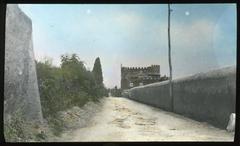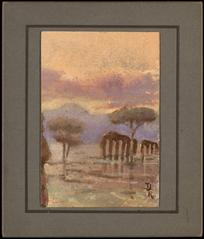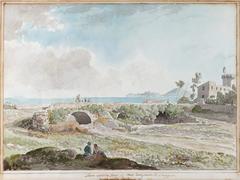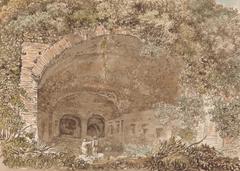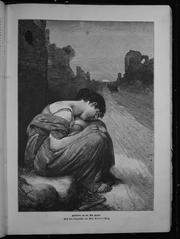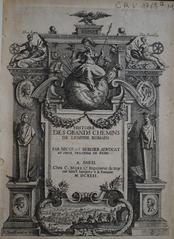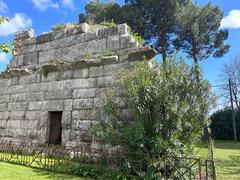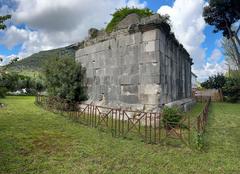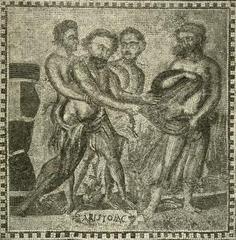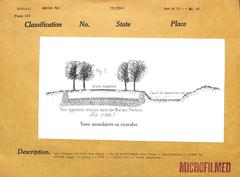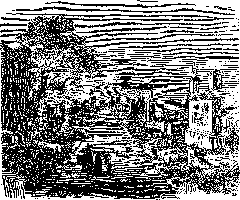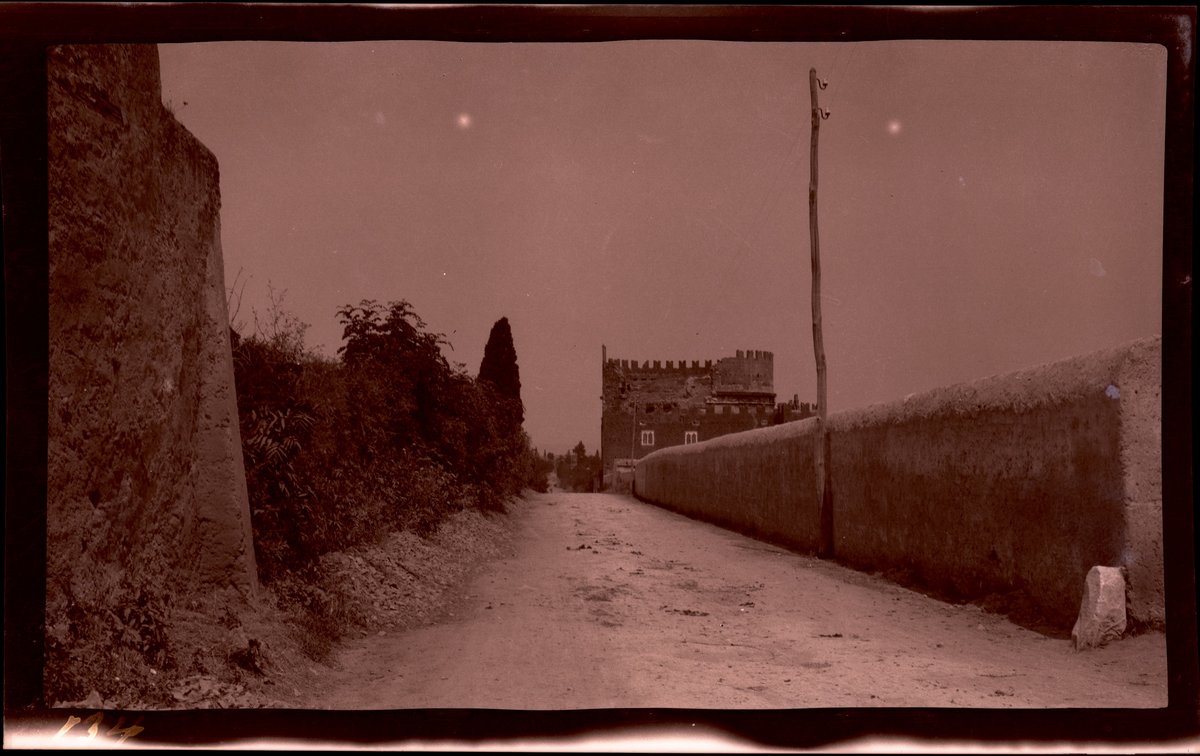
The Appian Way in Brindisi, Italy: Visiting Hours, Tickets, and Historical Sites Guide
Date: 14/06/2025
Introduction: The Appian Way and Its Significance in Brindisi
The Appian Way (Via Appia), known as the “Queen of Roads” (Regina Viarum), is one of the most celebrated feats of Roman engineering. Stretching over 350 miles (563 km) from Rome to Brindisi, this ancient road was pivotal for military, commercial, and cultural exchange during the Roman Republic and Empire. Brindisi’s natural harbor served as the Appian Way’s eastern terminus, acting as a critical gateway to Greece, Egypt, and Asia Minor. Today, Brindisi remains a vibrant testament to this history, where visitors can experience Roman architectural marvels, museums, and scenic promenades that highlight the city’s diverse heritage.
For travelers, Brindisi offers a unique blend of ancient monuments—most notably the Roman Columns marking the road’s end—along with lively cultural festivals, archaeological sites, and a picturesque waterfront. Comprehensive visitor information, including opening hours, ticket advice, and accessibility details, is readily available through trusted resources such as the Brindisi Tourism Office, Bellasboldadventures.com, and TravelToItalyGuide.com.
Table of Contents
- Introduction
- The Appian Way: History and Engineering
- The Appian Way’s Role in Brindisi
- Archaeology and Preservation Efforts
- Visiting the Appian Way Terminus: Hours, Tickets, and Accessibility
- Main Attractions and Points of Interest
- Practical Travel Tips and Local Insights
- Sample Itinerary
- Frequently Asked Questions (FAQ)
- Conclusion and Essential Resources
- References
The Appian Way: History and Engineering
Constructed beginning in 312 BCE by Appius Claudius Caecus, the Appian Way was the first and longest of Rome’s major roads, originally connecting Rome to Capua and later extended to Brindisi. Roman engineers used layers of sand, gravel, and large basalt stones, many of which still exist today. The road revolutionized transportation, facilitating rapid movement of troops and trade goods, and helped spread Roman law, culture, and language throughout the Mediterranean (rome.info).
The Appian Way’s Role in Brindisi
Brindisi’s harbor was the easternmost point of the Appian Way, acting as a major embarkation port for Roman expansion into the eastern Mediterranean. The two monumental Roman Columns, one of which still stands today, marked the official end of the road. Brindisi thus became a crossroads of Roman, Greek, and Byzantine influence, evident in the city’s architecture and traditions. The city also played a significant role as a departure point for pilgrims heading to the Holy Land (bellasboldadventures.com; traveltoitalyguide.com).
Archaeology and Preservation Efforts
Archaeological excavations in Brindisi have revealed remnants of its Roman port infrastructure, including mooring posts and breakwaters, some visible today along the waterfront. Informational panels describe the harbor’s role in ancient commerce. Preservation initiatives, such as the “Appian Way Regional Park,” aim to protect these historic sites, and the Appian Way’s significance has led to parts being recognized for UNESCO World Heritage status (bellasboldadventures.com).
Visiting the Appian Way Terminus: Hours, Tickets, and Accessibility
Visiting Hours
- Roman Columns & Waterfront: Outdoor sites are accessible year-round, 24/7.
- Museo Archeologico Provinciale Francesco Ribezzo: Open Tuesday to Saturday, 9:00 AM – 1:00 PM and 4:00 PM – 7:00 PM; Sunday 9:00 AM – 1:00 PM; closed Mondays (Official Museum Website).
- Granafei-Nervegna Palace: Tuesday to Sunday, 9:00 AM – 7:00 PM; closed Mondays.
Tickets
- Roman Columns & Waterfront: Free access.
- Museums: Tickets generally €4–€5 for adults, with discounts for EU citizens aged 18–25 and free entry for children under 18.
Accessibility
- General: The main waterfront and Roman Columns are accessible for visitors with mobility impairments. Some archaeological sites and the Virgil Staircase involve steps or uneven surfaces; check in advance for specific needs.
- Guided Tours: Local operators offer walking tours in English and Italian, including visits to otherwise restricted areas. Advance booking is recommended, especially in high season (Brindisi Tourism Office).
Main Attractions and Points of Interest
Roman Columns (Colonne Terminali della Via Appia)
These iconic marble columns, standing atop the Virgil Staircase, marked the ancient end of the Appian Way. One column remains, crowned with a replica capital (the original is now displayed in the Granafei-Nervegna Palace).
- Visiting Hours: Always accessible outdoors.
- Tickets: None required.
- Accessibility: Central location, easily reached on foot.
Virgil Staircase and Piazza Vittorio Emanuele II
The grand staircase descends from the columns to the waterfront. At its base, Piazza Vittorio Emanuele II offers a park setting with a monument to the poet Virgil, who died in Brindisi in 19 BCE.
Brindisi Waterfront and Lungomare Regina Margherita
A lively promenade with panoramic sea views, perfect for evening strolls and photography.
Granafei-Nervegna Palace
Renaissance palace housing the original Appian Way column capital and archaeological exhibits.
- Opening Hours: Tuesday to Sunday, 9:00 AM – 7:00 PM.
- Tickets: Free.
Museo Archeologico Provinciale Francesco Ribezzo
Extensive collection of Roman and Greek artifacts, including finds from the Appian Way.
- Opening Hours: Tuesday to Saturday, 9:00 AM – 1:00 PM, 4:00 PM – 7:00 PM; Sunday, 9:00 AM – 1:00 PM.
- Tickets: About €4.
Tempio di San Giovanni al Sepolcro
11th-century Norman church with ornate columns and frescoes—an important medieval pilgrimage stop.
- Visiting Hours: 9:00 AM – 12:00 PM, 4:00 PM – 7:00 PM.
- Tickets: Free.
Castello Alfonsino (Aragonese Castle)
A fortress on Sant’Andrea Island at the harbor entrance, accessed via guided tour.
Monument to the Italian Sailor
A 53-meter-high monument with an observation deck, commemorating Italian naval history.
- Opening Hours: 10:00 AM – 6:00 PM.
- Tickets: About €3.
Archaeological Remains of the Appian Way
Sections of ancient cobblestone road have been uncovered near the city. Guided tours available.
Piazza Duomo and Brindisi Cathedral
The city’s spiritual center, featuring Romanesque and Baroque architecture.
Practical Travel Tips and Local Insights
- Best Time to Visit: April–June and September–October for mild weather and fewer crowds.
- Getting There: Brindisi’s airport is 6 km from the city; the train station connects to Rome and other major cities.
- Getting Around: Most historical sites are within walking distance. Public transportation and taxis are available.
- Local Cuisine: Try Brindisi’s seafood and Puglian specialties at harbor-side restaurants.
- Accessibility: While many sites are accessible, confirm details for those with limited mobility, especially at archaeological sites.
- Events: The annual Via Appia Festival in June features historical reenactments and local cuisine.
- Photography: The Roman Columns, Virgil Staircase, and waterfront sunsets are excellent for photos.
- Safety: Brindisi is generally safe; use standard precautions and respect heritage sites.
Sample Itinerary
Morning: Visit the Roman Columns, Virgil Staircase, and Granafei-Nervegna Palace.
Midday: Explore the Museo Archeologico Provinciale Francesco Ribezzo and enjoy lunch by the waterfront.
Afternoon: Walk to Porta Mesagne, visit the Tempio di San Giovanni al Sepolcro, and take a guided tour of Appian Way remains.
Evening: Stroll along Lungomare Regina Margherita, catch sunset photos, and dine at a local restaurant.
Frequently Asked Questions (FAQ)
Q: What are the Roman Columns’ visiting hours?
A: The Roman Columns are accessible at all times, year-round.
Q: Are tickets required for the Roman Columns or waterfront?
A: No tickets are required; these outdoor sites are free.
Q: How much do museum tickets cost?
A: Museum entry is typically €4–€5, with discounts for EU citizens aged 18–25 and free entry for children under 18.
Q: Are guided tours available?
A: Yes, guided tours can be booked online or at the Granafei-Nervegna Palace.
Q: Is the Appian Way terminus accessible for visitors with mobility impairments?
A: Most major sites are accessible, though some areas, such as the Virgil Staircase, involve steps.
Q: When is the best time to visit?
A: Spring and autumn provide comfortable weather and fewer tourists.
Conclusion and Essential Resources
A visit to the Appian Way terminus in Brindisi offers a powerful connection to Roman history, remarkable engineering, and Mediterranean culture. The city’s well-preserved monuments, vibrant events, and welcoming atmosphere make it an ideal destination for history lovers and travelers seeking authentic Italian experiences. For up-to-date visitor details, guided tours, and event listings, consult the Brindisi Tourism Office and expert guides like Bellasboldadventures.com.
Download the Audiala app for audio tours, interactive maps, and the latest travel tips, and follow us on social media for further inspiration.
References
- Exploring the Appian Way: Visiting Hours, Tickets, and Historical Highlights in Rome (rome.info)
- Visiting the Appian Way Terminus in Brindisi: Hours, History, and Travel Tips (bellasboldadventures.com)
- TravelToItalyGuide.com: What is the Longest Roman Road in Italy? (traveltoitalyguide.com)
- Official Brindisi Tourism (brindisiturismo.it)
- Visit Puglia: Brindisi What to See (visit.puglia.it)
